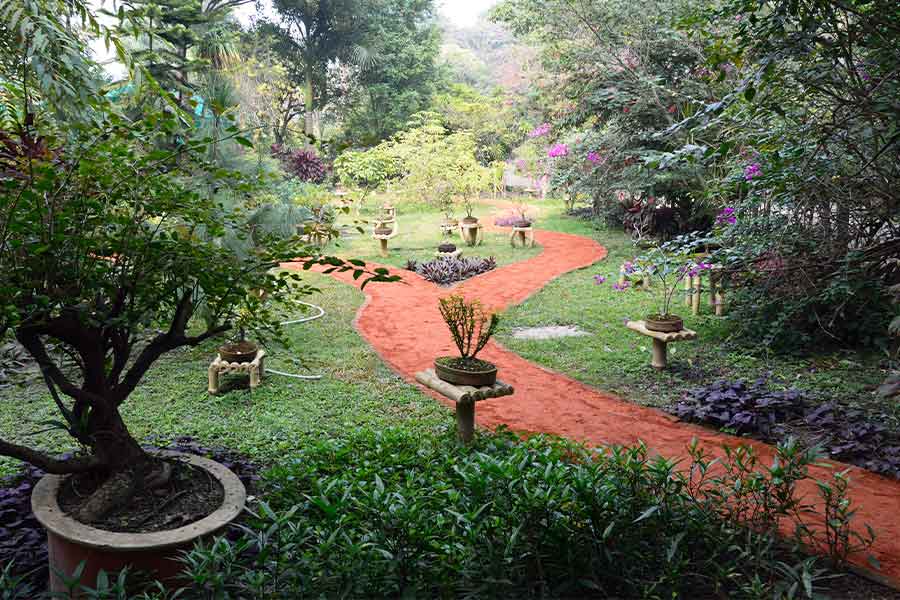Every city has its own anxieties and disorders. One of Calcutta’s major anxieties is related to its open spaces.
The city is disturbed by the sight of any and tries its best to fix things.
We are not just talking about grand old buildings being ‘developed’ into massive multi-storeys that fly into the sky, making you feel dizzy with their heights and sometimes with their ugliness. From the sparkling new penthouses, perhaps on the 32nd floor, the city dissolves into a calming visual in the evenings, spread out like a dark, sequinned banner as far as the eyes can see, almost still, with no noise or glare or jerky movement ever coming up.
New buildings coming up in the place of old, maximising all the open space around the older construction, is, of course, de rigueur. Construction is a major source of livelihood in contemporary West Bengal, more than in some other places, and the constant inflow of people into the city has turned housing into a crisis. There is no hope of a let-up in construction, even though the city is among the lowest in India in its percentage of open space, which is feared to have dropped below 5% from about 13% more than two decades ago. About 4,000 waterbodies in the city have been filled up in the last three decades, a sacrifice to construction. The city has lost its green cover by 30% over a decade. The East Calcutta Wetlands are vanishing fast.
At least 15% of a city’s area should be open space.
But why are our parks and roads also being ‘developed’ by the city authorities? These constructions — or installations — seem to have no function other than obstructing traffic, inconveniencing pedestrians and creating eyesores that become landmarks. And yes, they serve as advertisements for the local councillor.
A lot of area within a park can be enclosed these days for sporting clubs, which shrinks the access to open space for others, even if sporting activities should remain a priority. Maybe the many stadiums lying unused in the city could be a starting point?
The rest of the building up within parks seems positively dangerous. Within a park, which can be a playground by itself, other playgrounds are built. You have a cluster of swings, slides and seesaws, which are obviously not enough, because the rest of the open space is filled up by statuary.
To suit a child’s taste the statues can be of Mickey Mouse, Chhota Bheem and one or two Hindu deities, but they are usually grotesque. They may embody a silent frenzy that may give the small children nightmares.
Looking at these specimens of public art, you feel, once again, that open space triggers something in the guardians of the city, who are compelled to quickly fill it up with something solid.
The statues do not stop at the park. They march out, morphing a little. You see sculptures of great men and women — more men than women — of Bengal and India forming processions in several parts of the city. Beliaghata and Lake Town are full of them, in particular. Often the fibreglass does not seem equal to the greatness. The men and women stand frozen in time, but exposed directly to Calcutta’s pollution. Not fair after what they have done for us.
I am not even getting into the glow signs in streets with a giant red heart that profess love for the city’s wards or for the city itself. Suffice it to say that when you see this red heart glowering at a distance when you are coming home late at night, you know that love can assume the strangest of forms.
Not that Bengal is unique. The Centre has scaled up the aggression on open space, filling up the mountains with highways. Wonder what encroachment is called when the authorities do it.










